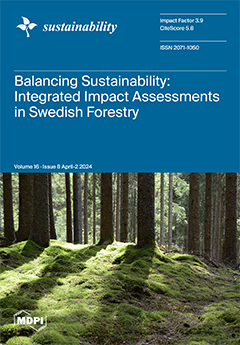To unleash the emotional potential of natural fibre materials in sustainable development and utilisation, this paper presents a material-driven design method with emotional and ecological indicators (E
2-MDD). The method offers product-level solutions for the sustainable development of natural materials. The method
[...] Read more.
To unleash the emotional potential of natural fibre materials in sustainable development and utilisation, this paper presents a material-driven design method with emotional and ecological indicators (E
2-MDD). The method offers product-level solutions for the sustainable development of natural materials. The method involves several steps, such as screening the main material quality, capturing the user emotion vision, deconstructing the E
2 vision pattern, and deducting the product design concept. The method was tested on luffa sponge samples, seen as one kind of traditional fibre resource, which resulted in four differentiated schemes, which were evaluated using the E
2-MDD ring radar column score chart. The study identified three key emotional qualities for natural fibre materials: associativity, uniqueness, and biophilicity. The results show that product concepts closer to the natural material’s original form scored higher, while the inclusion of non-natural materials had a negative impact on the evaluations. This study also found that E
2-MDD could strengthen the emotional and ecological connection between people and products, further indicating that material and design can establish a link between environmental friendliness and emotional experience. Lastly, the paper suggests future development areas for the E
2-MDD method, including focusing on users, ecology, and business.
Full article





